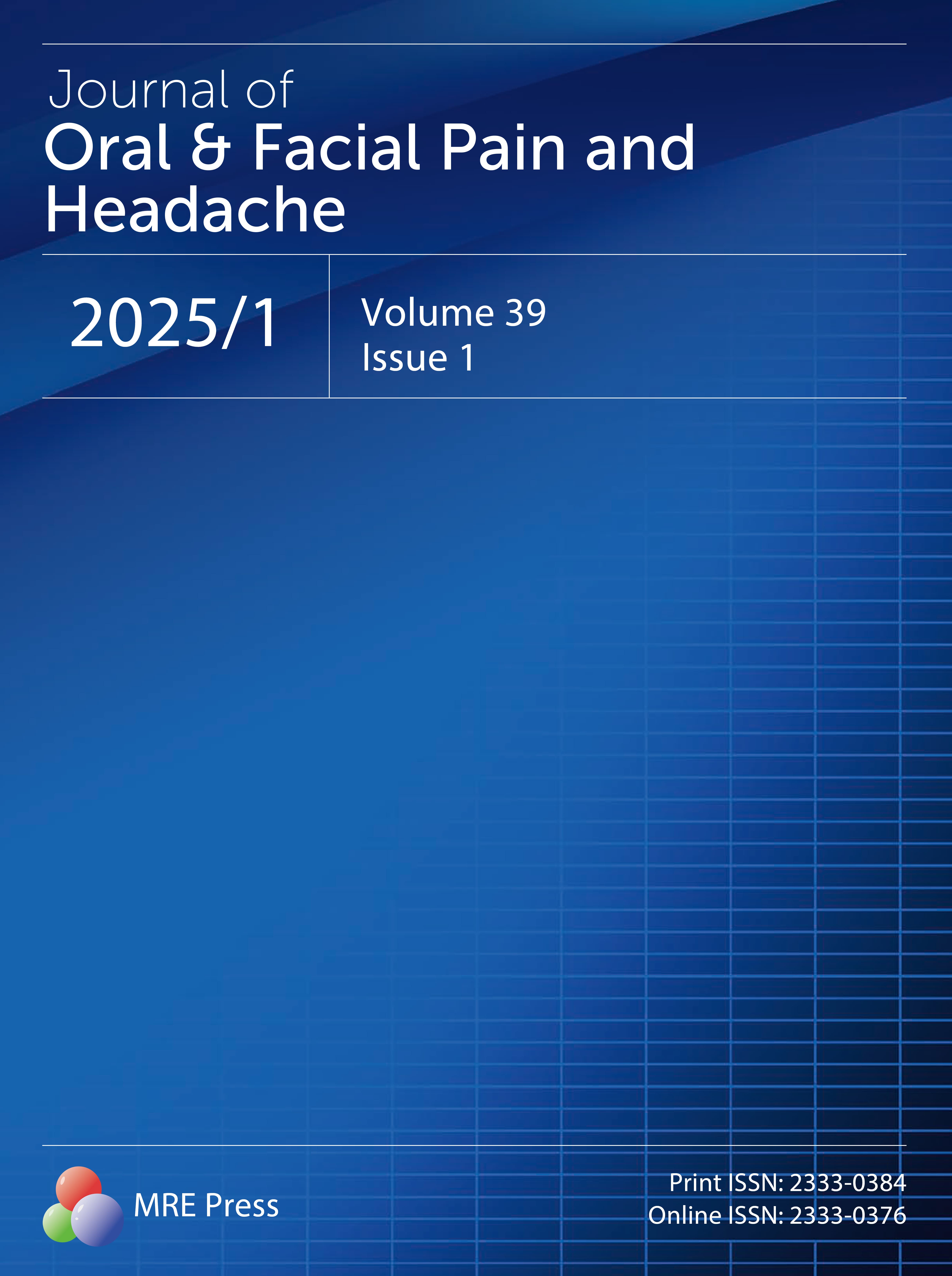Title
Author
DOI
Article Type
Special Issue
Volume
Issue
Article Menu
Export Article
More by Authors Links
Article Data
- Views 686
- Dowloads 50
Journal of Oral & Facial Pain and Headache (OFPH) is published by MRE Press from Volume 38 lssue 1 (2024). Previous articles were published by another publisher on a subscription basis, and they are hosted by MRE Press on www.jofph.com as a courtesy and upon agreement with Journal of Oral & Facial Pain and Headache.
Original Research
Open AccessMasticatory Strains on Osseous and Ligamentous Components of the Temporomandibular Joint in Miniature Pigs
Masticatory Strains on Osseous and Ligamentous Components of the Temporomandibular Joint in Miniature Pigs
1Department of Orthodontics, School of Dentistry, University of Washington, Seattle. Washington, USA
*Corresponding Author(s): Zi-Jun Liu E-mail: zjliu@u.washington.edu
Abstract
Aims: An animal study of functional biomechanics was undertaken to understand normal loading of the temporomandibular joint (TMJ) and to provide insight into the pathogenesis of TMJ disorders. Methods: Bone strain and ligamentous deformation were measured during mastication in 26 10-month-old minipigs. Half the subjects had undergone a surgical disruption of the left lateral capsular and disc attachments to the condyle 5 to 6 weeks previously. Rosette strain gauges were bonded to the left lateral surfaces of the squamosal bone near the TMJ, the condylar neck, and the mandibular corpus below the molar region. Differential variable reluctance transducers (DVRTs) were placed bilaterally in the lateral capsular tissue of the joints. Bone strains, ligamentous deformations, and the electromyographic activities of the masseters and lateral pterygoids were recorded during natural mastication. Results: In all animals on both working and balancing sides, mastication caused bone strains that were dominated by tension in the squamosal bone site and by compression in the other sites. Measurements from the DVRT revealed elongation of the lateral capsular tissue in the last phase of the power stroke and shortening in the initial phase of opening, which was almost simultaneous with the development of bone strain. Strain in the capsule ranged from 3 to 25%, with the strain of the balancing side exceeding that of the working side. The surgical disruption did not alter chewing side preference or bone strain, but a tendency toward more extensive ligamentous deformation on the intact side was observed. Furthermore, the ratio of masseter to lateral pterygoid activity was smaller on the disrupted side and larger on the intact side, in comparison to control pigs. Conclusion: Both osseous and ligamentous components of the TMJ are strained during mastication, and the latter are more deformed on the balancing side. Disruption of the lateral attachment had little effect on strain in the osseous components but appeared to increase strain in the capsule and to modify the balance of masticatory muscle activity.
Keywords
remporomandibular joint; masticatory muscles; ligaments; electromyography
Cite and Share
Zi-jun Liu, Susan W. Hemng. Masticatory Strains on Osseous and Ligamentous Components of the Temporomandibular Joint in Miniature Pigs. Journal of Oral & Facial Pain and Headache. 2000. 14(4);265-278.
References

Abstracted / indexed in
Science Citation Index (SCI)
Science Citation Index Expanded (SCIE)
BIOSIS Previews
Scopus
Cumulative Index to Nursing and Allied Health Literature (CINAHL)
Submission Turnaround Time
Editorial review: 1 - 7 days
Peer review: 1 - 3 months
Publish Ahead of Print: within 2 months after being accepted
Notes: Your information is kept confidential throughout the review process.
Top
